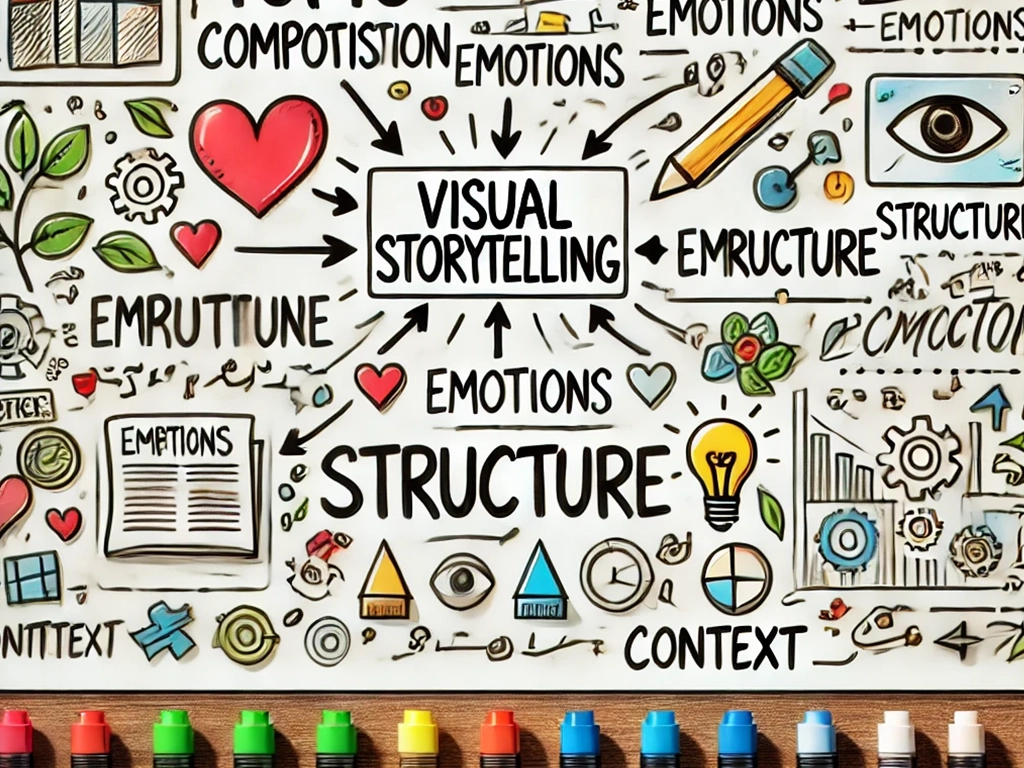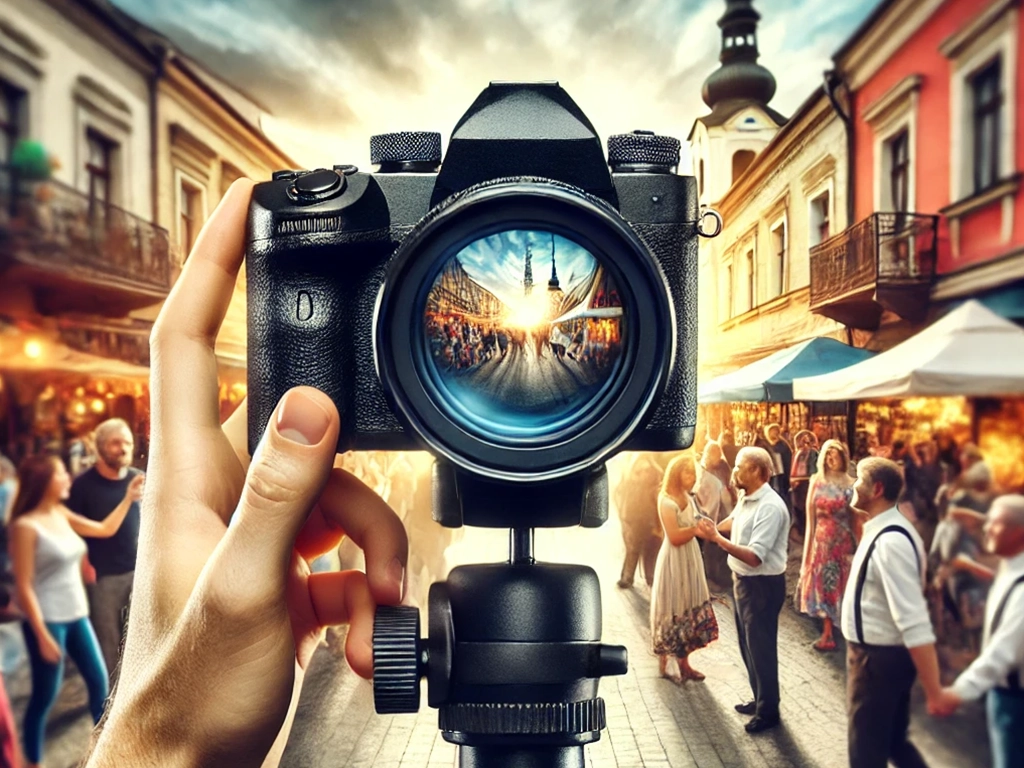In today’s fast-paced media landscape, visual storytelling has become an essential skill for journalists, photographers, and media professionals. Powerful images can evoke emotions, explain complex ideas, and grab attention faster than text alone. By mastering visual storytelling, you can improve the impact of your work, communicate more effectively, and connect with your audience on a deeper level.
The power of images in storytelling
Visual storytelling isn’t just about taking beautiful pictures. It’s about developing a narrative that resonates with your audience. A captivating visual story combines impactful imagery with context, structure, and purpose. Whether you’re documenting an event, covering social issues, or sharing artistic work, your images should guide viewers through a meaningful experience.
Images have the power to captivate people emotionally and make complex issues easier to understand. For example, a powerful series of photos about homelessness can generate empathy and inspire change in ways that statistics alone can hardly achieve. Strong visual storytelling sparks curiosity, encourages sharing on social networks, and often leaves a lasting impression on viewers.
Understanding the elements of visual storytelling
Effective visual storytelling depends on several key elements. Each plays a crucial role in conveying a clear and powerful message:
- Topic: The core element of your visual story should be compelling and relevant to your audience. Strong motives often arouse curiosity or emotions.
- Composition: A well-thought-out composition directs the viewer’s gaze and emphasizes the core message of the image. Image sections, angles and lighting influence the visual effect.
- Emotions: Visual storytelling thrives on emotional connection. Images that capture authentic feelings tend to resonate more deeply with the audience.
- Narrative structure: Just like written stories, visual stories should have a beginning, middle, and end. Progress creates a sense of purpose and keeps viewers engaged.
- Context: Visual elements are more meaningful when combined with clear context. Captions, headlines, or descriptions provide background information that helps viewers understand what they’re seeing.
Techniques for creating impactful visual stories

Creating meaningful visual stories takes more than just taking photos. Well thought-out planning and execution is crucial. Here are the main techniques to improve your visual storytelling skills:
1.Plan your narrative
Before you start filming, you should define the purpose of your story. Ask yourself:
- What message do I want to convey?
- Who is my target group?
- What emotions or reactions do I want to evoke?
By outlining these goals ahead of time, you’ll ensure that your visual story is focused and impactful.
2.Capture authentic moments
Authenticity is at the heart of compelling visual storytelling. People connect best with real emotions and real-life moments. Instead of staging shots, observe and capture natural interactions, candid expressions, and unscripted situations. Authenticity creates trust and attracts viewers.
3.Use visual contrast
Contrasts in images enhance storytelling by creating tension, surprise, or deeper meaning. This can involve juxtaposing light and dark, rich and muted colors, or old and new elements within a frame. Contrasts create visual interest and highlight key themes in your narrative.
4.Focus on details
Small details often tell the strongest stories. A worn shoe can symbolize distress, while a child’s smile can convey hope. By emphasizing symbolic elements, you give viewers clues about the larger narrative and invite them to connect emotionally with your work.
5.Sequence your images
Instead of relying on a single image, you can build your story across multiple photos. Each image should add a new dimension and create a flow that guides viewers through your narrative. For example, a series of photographs documenting a protest might include images of preparation, confrontation, and resolution to tell a complete story.
6.Integrate subtitles and context
Images are powerful, but their meaning can often be ambiguous without context. Adding thoughtful captions, headlines, or supporting text provides viewers with important background information. This allows your audience to fully grasp the meaning of your work.
Common mistakes to avoid in visual storytelling
Even experienced media professionals can fall into certain pitfalls when trying their hand at visual storytelling. Here are some common mistakes to avoid:
- Image overload: Too many images can overwhelm viewers and dilute your message. Focus on choosing only the most impactful images that support your narrative.
- Ignoring the needs of the audience: Not considering your target audience can lead to content that feels irrelevant or disjointed. Adapt your visual narrative style to your viewers’ preferences.
- Overly staged photos: While some staging is unavoidable, overly staged or artificial-looking photos can reduce authenticity and emotional impact.
- Lack of clear narrative: Visual storytelling should follow a clear structure. Without this, viewers may struggle to understand your intended message.
Visual storytelling in the digital age
Today’s digital platforms have changed visual storytelling. Social media channels like Instagram, TikTok, and Facebook provide instant access to a large audience. To use these platforms effectively, you need to adapt your visual storytelling techniques:
- Use vertical and square formats to adapt to mobile screens.
- Create Instagram stories or Reels to showcase dynamic photo sequences.
- Add text overlays and animations to improve comprehension.
Digital storytelling also allows you to experiment with video, combining motion, sound, and visual effects to create a powerful impact. As attention spans shrink online, concise but meaningful visual narratives are essential.
Building a visual storytelling portfolio

As a media professional, curating a strong visual portfolio is essential to establishing your reputation. Keep these tips in mind:
- Organize your portfolio by theme or project.
- Add short descriptions to each image to provide context.
- Highlight projects that demonstrate your ability to tell meaningful stories through visuals.
A well-structured portfolio reflects your unique perspective, skills, and storytelling skills, helping you attract potential clients, publishers, or collaborators.
Inference
Mastering visual storytelling allows media professionals to connect with audiences in an impactful way. By focusing on authenticity, composition, and narrative flow, you can elevate your work and create compelling visual stories that inform, inspire, and resonate. Whether it’s through photography, video, or multimedia content, visual storytelling is an important tool to amplify your voice in today’s competitive media landscape.
